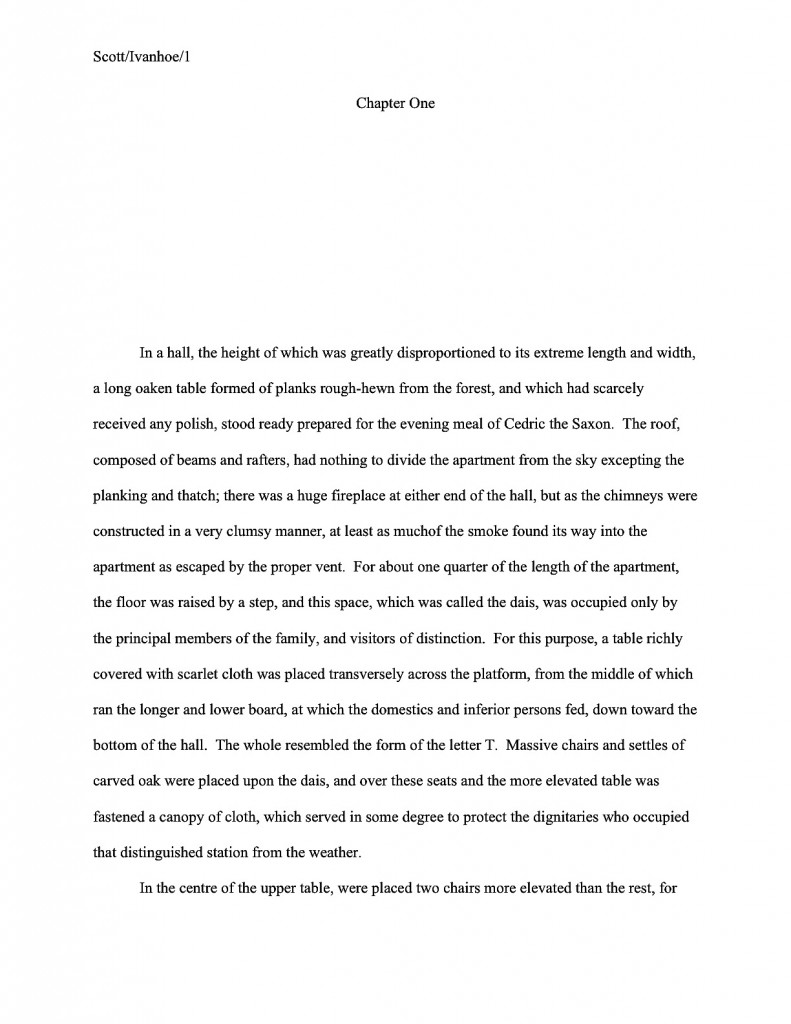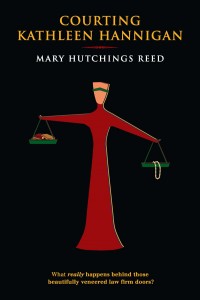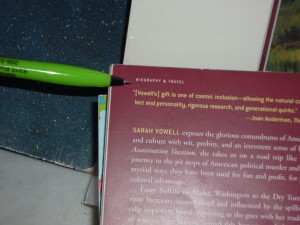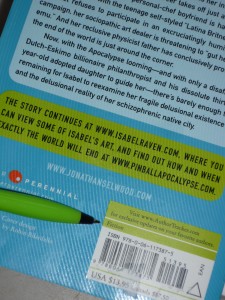
Welcome to 2010, long- and short-term members of the Author! Author! community. May this be a year of major steps forward: starting the book of your dreams, finishing the book of your dreams, revising your manuscript until it becomes the book of your dreams, discovering the best agent on earth to represent it, convincing the best agent on earth to represent it, that agent blandishing the ideal editor into reading it, said ideal editor falling in love with it, a lucrative sale and easy publication process, readers eager to bury their noses in it, a second book (or a third, or a fifteenth) that exceeds expectations, a well-deserved Pulitzer prize.
You know, the basics of a writing life well-lived.
An especially hearty howdy-do and handshake for those of you acting on a New Year’s resolution to learn how to get your book into print. Or how to land an agent. Or why a writer might need to land an agent in order to get her book into print. You’ve happened upon this blog at an excellent time, because I’m going to spend the next couple of weeks getting down to those very brass tacks. I’m going to be addressing the two most basic questions of the writerly life:
(1) How does a book go from sitting on an aspiring writer’s desk to being sold in a bookstore?
(2) What, if anything, does an aspiring writer need to know to navigate that trip successfully?
Why go straight to the root of the quest, rather than simply handing those new to the game a couple of one-page sheets of directions? Well, first of all, because there are plenty of advice-givers out there willing to bark unexplained orders at those new to the biz. In my experience, quick-and-dirty isn’t nearly as helpful as carefully-explained. Unless a writer understands why things work the way they do, he’s not only likely to break the rules — he’s not going to be able to improve his game.
Heck, he may not be able to play with the big kids at all. So: let’s talk fundamentals.
That chorus of groans you just heard, newcomers, arose from some of the longer-term readers of this blog who were really, really into my recent series on self-editing. “But Anne,” they whimper, ink-stained fingers gesticulating, didn’t you tell us just the other day that since half the writers in North America suddenly send out queries and submissions” (you’ll be tossing around those terms very soon, newbies, never fear) “as part of their New Year’s resolutions, we should hunker down and wait until mid-February before trying afresh? Wouldn’t that hiatus be a dandy time for, you know, revision?”
Indeed it would be, ink-stained protestors. A review of the basics before leaping back into the fray is never a bad idea. But just to keep it interesting, I’ll make a valiant effort to keep tucking tidbits useful for self-editors into the corners of my next couple of weeks’ posts. I wouldn’t want you to feel that I was ignoring old friends for new.
And let’s face it: a crash course in how the publishing industry works isn’t a bad idea before leaping back into the fray. As I’m sure many of you are already well aware, when a rejection is staring a writer in the face, it’s awfully easy to forget that it isn’t personal; good book concepts and well-written manuscripts is just part of how the system works.
Didn’t expect me to be so up-front about it, did you, newbies? Fair warning: this series is going to be rather disturbing to any writer who believes that the only real test of whether a manuscript is any good is whether it gets published. Or that a good manuscript will always be able to find an agent, and swiftly.
At the risk of repeating myself, that’s just not how it works.
Honest. I’ve been in the game practically since birth, and I’m here to tell you, there is no literature fairy. No winsome sprite will guide an agent to the doorstep of a talented new writer, simply because she is talented; the writer has to take some steps to flag that agent down.
But I’m getting ahead of myself, amn’t I? I haven’t even laid the foundation of gloom-inducing yet, and here I am, waving from a second-floor window.
What I’m about to tell you may well be depressing — heck, it depresses me, and I have an agent — but please, I implore you, stick with this series, even if you are already fairly familiar with, say, how to construct a passable English sentence or to write a query. This is information that everyone even considering trying to bring his book to publication needs to know.
Seriously, it’s to your advantage. Aspiring writers who misunderstand how books do and don’t get published are likely to waste their time and resources on unsolicited submissions that will inevitably get rejected.
In other words, those of you who just murmured, “What’s an unsolicited submission?” are not the people for whom I am writing this. I’m talking to every aspiring writer within the sound of my voice. I want to help you succeed.
So let’s get this baby cranking, as Johann Gutenberg doubtless said to his assistants in 1450 or so.
Because there are several ways a book can end up on a shelf in your local literary emporium, I’m going to break up the question into several parts. First, I’m going to tackle the classic means, publication through a great big publishing house.
But first, a little history — and while we’re at it, let’s debunk a few widely-believed myths.
How books used to get published during the Theodore Roosevelt administration, or, how a surprisingly high percentage of aspiring writers (mistakenly) believe the industry still works
A hundred years ago, the publication process was pretty straightforward: an author wrote a book, contacted an editor at a publishing house, and if the editor liked it, he (it was almost invariably a he) chatted about it with senior staff, persons with whom he may well have shared a dormitory at some elite private college; if he could convince them to take a chance on the manuscript, he would edit it for publication. Printing presses were set in motion, and in due course, the book was available for sale. The publisher sent out advance copies to newspapers, so they could produce reviews.
Of course, that was back when there were few enough books published in these United States that most releases from a good-sized publishing house could garner a review in a major newspaper or magazine. Now, so many books are published in any given year that only a tiny fraction of them enjoy the substantial publicity of a well-placed review.
Which is why, in case you’ve been wondering, you’re far more likely to see a review of the eighteenth novel by an already-established author than the brilliant debut another. Assuming that the newspaper or magazine in question even carries book reviews anymore.
Heck, that’s assuming that you’re even reading newspapers anymore.
Back to days of yore. Amazingly, considering that authors often possessed only one copy of their manuscripts — remember, the photocopier wasn’t invented until 1938, and it wasn’t commonly available until two decades later — it wasn’t uncommon for writers just to pack their books into boxes and send them to publishers without any preliminary correspondence.
This is what’s known in the biz as an unsolicited submission, a manuscript an author sends to an agent or editor without said agent or editor’s having asked to see it. Today, an unsolicited manuscript that appears on an editor’s desk out of a clear blue sky is invariably rejected unread.
Not every aspiring writer believes that, however, because they’ve heard what used to happen to such manuscripts in the days of the Model A: publishers would set these books aside until some luckless employee of the publishing house had time to go through the stack.
This ever-burgeoning source of reading material was known as the slush pile. Although solicited submissions (i.e., those that the editor has actually asked to see) have probably always enjoyed a competitive advantage, slush pile manuscripts did occasionally get discovered and published.
They also, predictably, got lost on a fairly regular basis. Thus the old writerly truism: never send anyone the only copy of your manuscript.
That hasn’t always been easy advice to follow, unless one happened to command a personal army of copyists and/or a steno pool; see my earlier comment about historical access to copy machines.
Because there were fewer manuscripts (and publishing houses were more heavily staffed) before the advent of the personal computer, a writer did not need an agent: it was possible to deal directly with the editor who would handle the book, or at any rate with the luckless assistant whose job it was to go through the slush pile. But back when jolly old TR (Roosevelt hated being called Teddy) was overseeing the nation’s business, it was also still completely permissible to submit a manuscript in longhand, too.
Times change, as they say; no agent or editor in her right mind would read even a sentence of a hand-written submission today. Another way that time changed the publishing industry was that publishing houses began expecting to see fiction and nonfiction presented to them differently.
The fiction/nonfiction split
Both historically and now, novels were (and are) sold to publishers in pretty much the form you would expect: as complete manuscripts, and only as complete manuscripts. At least, editors buy first novels that way; until fairly recently, the major publishing houses quite routinely offered fiction writers who had written promising first novels could snag a multi-book contract.
It took until the 1990s for publishers to notice that a commercially successful first book is not necessarily an absolute predictor of whether the author’s second or third book will sell well. Usually, there was a pretty good reason for that: the author spent five or ten years, or even a lifetime, cranking out that first novel, but after it hit the big time, her editor began clamoring for the next immediately. The author tossed something together in a year, and poof! Everyone was astonished that the second wasn’t nearly as good as the first.
Hmm, who could have predicted that? As late as the 1980s, not the publishing industry.
As a result, while multi-book fiction contracts still exist — particularly in genre fiction, which is conducive to series-production — they have become substantially less common in the mainstream and women’s fiction markets. Which is to say: the vast majority of fiction is sold on a per-book basis. While previously-published authors can occasionally sell subsequent books based upon only a few chapters (known, unsurprisingly, as a partial), novelists should expect to write books– and have them polished into publishable form before they can sell them.
Nonfiction, however, is typically sold not on the entire book, but via a marketing packet known as a book proposal. There are several hefty categories on the archive list at right on how to put one together, but for the purposes of this post, a generalization will suffice: a book proposal is a packet consisting of a description of the proposed book, a sample chapter, descriptions of subsequent chapters, and an array of marketing materials.
Typically, these materials include everything from a detailed analysis of similar books already on the market to an explanation of who the target readership is and why this book will appeal to them to a marketing plan. Traditionally, previously published writers also include clippings of their earlier work in their book proposals — which is why, in case you’d been wondering, so many nonfiction books are authored by journalists. They tend to have stacks and stacks of clippings on hand.
Why are clippings helpful in selling a nonfiction book to a publisher? Because they prove that some other editor has thought enough of the proposer’s writing to publish it before. Basically, a book proposal is a job application: in effect, the writer is asking the publishing house to pay her to write the book she’s proposing.
That does not, however, mean that every nonfiction writer will get paid up front, at least not entirely. Why not, you ask? Because buying something that does not yet exist obviously entails running the risk that the author may not deliver, the advance for a book sold in this manner is typically paid in three installments, one when the publication contract is signed, another after the editor has received and accepted the manuscript, and a third when the book actually comes out.
Call it an insurance policy for authorial good behavior. Apparently, novelists are regarded as shiftier sorts, because to this day, the only acceptable proof that novelists can write a book is to have already written one.
Everyone clear on the fiction/nonfiction distinction? If not, please trot right to the comments and ask a pertinent question.
While we’re waiting, let’s move on to one of the other great cosmic mysteries, shall we?
The lingering demise of the slush pile
Just to clear up any misconceptions floating around out there: if you want to sell a book to a major U.S. publisher, you will need an agent to do it for you. The slush pile is no more; currently, all of the major houses will accept only represented manuscripts.
Like any broad-based policy, however, it comes with a few caveats. We’re only talking about the great big publishers here; there are plenty of smaller, independent publishers that do accept direct submission. Very good houses, some of these. One hears tell of some children’s book divisions at major houses that still accept direct submissions; if an editor meets a writer at a conference and positively falls in love with his work, it’s not unheard-of for the editor to help the writer land an agent (usually one with whom the editor has worked recently) in order to side-step the policy. Stuff like that.
But it’s not wise to assume that you’re going to be the exception. If you’re hoping for a contract with a big publisher, get an agent first.
This was not always a prerequisite, of course. Until fairly recently, one element of that fiction/nonfiction split I was regaling you with above was that while novels had to go through an agent, nonfiction writers could submit proposals directly to publishers. Not so much anymore.
You novelists out there are getting a bit restive, aren’t you? “But Anne,” I hear some of you complaining, and who could blame you? “This is starting to seem a trifle discriminatory against my ilk. Nonfiction writers are presenting substantially less writing than fiction writers; a proposal’s what, 40-60 pages, typically? As a novelist, I’m expected to produce an entire book before I approach an agent, much less a publishing house. I would have thought that if publishing houses were going to distrust anybody enough to want an agent to vouch for ‘em, it would be the author whose book they were buying at the idea stage.”
Don’t upset yourselves, oh novelists; it’s not good for your stomach acids, and besides, since everyone needs an agent now, it’s a moot point. But I suspect that the answer to your question is that that publishers habitually receive far more fiction submissions than nonfiction ones — interesting, given the long-standing industry truism that fiction is easier to sell, both to editors and to readers. (It probably also has something to do with the fact that nonfiction books are often proposed by those with clip-worthy previous publishing credentials, such as magazine articles and newspaper columns, but believe me, the other reason would be more than sufficient.)
Before petty bickering begins to break out between fiction and nonfiction writers over a situation that has more or less vanished anyway, let’s turn our attention to a more absorbing topic: why would the big publishing houses feel so strongly about agents that they would all agree upon a represented-manuscripts-only policy?
The rise of the agent
Although many aspiring writers regard the necessity of procuring an agent as at best a necessary evil, agents perform an exceedingly important role in the current publishing market: not only do they bring brilliant new writers and amazing new books to editors’ attention, but they are now also effectively the first-round submission screeners for the publishing houses.
Okay, so they bring some not-so-hot writers and less-than-amazing books to ‘em, too, but try to see the forest, not the trees here. By passing along only what they consider marketable and of publishable quality, agents thin the volume of submissions the publishers see on a monthly basis to Niagara Falls, rather than the Atlantic Ocean.
Everybody understand that? Agents reject 95% of the queries they receive, and an even higher percentage of submitted manuscripts, so the publishers don’t have to do so.
It’s easy to resent agents for this, to think of them as the self-appointed gatekeepers of American literature, but that’s not really fair. Much of what they assure that the editors never see honestly isn’t publishable, after all; I hate to disillusion anyone (and yet here I am doing it), but as Millicent the agency screener would be the first to tell you, a hefty majority of the writing currently being queried, proposed, and submitted is simply not very well written. Even very promisingly-written submissions are often misformatted, or would require major editing, or just plain are not quite up to professional standards.
Or so runs the prevailing wisdom; we could debate for weeks over the extent to which that’s really true, or how difficult it often is for genuinely innovative writing to land an agent. Suffice it to say that if the major publishers believed that agents were rejecting manuscripts that their editors should be seeing, they presumably would change their policies about accepting only agented manuscripts, right?
“Okay, Anne,” I hear some of you reluctantly conceding, “I get that if I hope to sell my book to a major U.S. publisher, I’m going to need to find myself an agent. But if you don’t mind my asking, what do I get out of the exchange, other than a possible entrée to an editorial desk?”
A good agent can do quite a bit for a writer. First, as you reluctant conceders already pointed out, an agent can make sure your manuscript or book proposal lands on the right desks: not just any old editor’s, but an editor with a successful track record in acquiring books like yours and shepherding them through the sometimes difficult publication process. (Don’t worry; I’ll be clarifying that part later in this series.) Pulling that off requires both an intimate knowledge of who is looking to buy what right now — not always an easy task, considering how quickly publishing fads change and editorial staffs turn over — but also the connections to enable a successful pitch to the right audience.
In other words, for an agent to be good at his job, he can’t just send out submissions willy-nilly; he must have the experience to target the editors who are most likely to be interested in any given book.
Agents also negotiate book contracts for their clients, act as a liaison between the author and the publishing house, and help mediate any disputes that might arise. Like, for instance, if the publishing house is being a mite slow in coughing up the contracted advance.
Yes, it happens, I’m sorry to report. And if it happens to you, you’re going to want an experienced agent on your side, fighting for your dosh.
Admittedly, it will be very much in your agent’s self-interest to make sure that you’re paid: in the U.S., reputable agents earn their livings solely from commissions (usually 15%) on their clients’ work. That means, of course, that if they don’t sell books, the agency doesn’t make any money.
Allow me to repeat that, because: agencies are seldom non-profit enterprises. Contrary to common belief amongst aspiring writers, their employees are not primarily concerned with the task of discovering great new talent, but rather with finding books they believe the agency can sell within the current literary market.
In other words, they reject books they know to be written well. Routinely. Because if they can’t sell the book, the agency does not make money.
It’s honestly as simple as that. See why knowing how agencies work might help you take a rejection less personally?
Typically, the agent will handle all of the money an author makes on her book: the publisher pays advances and royalties to the agency, not directly to the author; the agency will then deduct the agent’s percentage, cut a check for the rest, and send it to the author. In the U.S., agencies are also responsible for providing their clients and the IRS with tax information and documentation.
Since self-employed people like writers have been known to get audited from time to time, you’re going to appreciate this level of verifiability once you become successful. Trust me on this one.
To recap how things have changed since Theodore Roosevelt roamed the earth:
Way back when: aspiring writers used to be able to approach editors at major publishing houses directly to market their books.
The reality now: with few exceptions, a writer will require an agent to approach a publisher for her.
Way back when: fiction and nonfiction books were marketed in the same manner, as already-completed manuscripts.
The reality now: fiction is sold on the entire manuscript; with certain exceptions, nonfiction is sold as via a book proposal.
Way back when: nonfiction writers could approach major publishing houses directly with their book proposals.
The reality now: agents submit both fiction and nonfiction books on behalf of their authors.
Way back when: agents played a substantially smaller role in the overall dynamic of U.S. publishing.
The reality now: agents largely determine which manuscripts editors will and will not see.
Way back when: an author often formed a personal relationship with his editor and other publishing house staff, sometimes lasting decades.
The reality now: the editor who acquires a book may not still be the editor handling it by the time it goes to press; a good agent can do a lot to help smooth over any resulting difficulties.
Whew — that’s quite a lot of information to absorb in a single post, isn’t it? I’m going to stop for the day, to give all of this time to sink in. Next time, on to what happens to a book after an agent submits it to an editor at a publishing house!
Yes, yes, I know: this isn’t precisely fun material to cover, but you will be happier in the long run if you’re familiar with it.
But wait — I haven’t given you a self-editing tip yet today, have I? Here’s one that will keep many of you busy for a good, long while: in most adult fiction, professional readers like Millicent prefer to see tag lines — all of those he said, she exclaimed, they cried statements that litter the average dialogue scene — minimized, or even omitted entirely. Unless there is serious doubt about which character is speaking when, they usually aren’t necessary.
Quotation marks, after all, indicate that what falls within them is being spoken aloud. So dialogue that runs like this:
Johnny smoothed back his pompadour, copied from a torn photo of his grandfather. “Yeah?” he said. “Who’s gonna make me?”
Tina quailed in fear, but she stood her ground. “I am,” she said stoutly.
“Ooh,” Johnny said, “this is going to be fun. I haven’t created a scar in weeks.”
may often be trimmed to the following, with no real loss of meaning:
Johnny smoothed back his pompadour, copied from a torn photo of his grandfather. “Yeah? Who’s gonna make me?”
Tina quailed, but she stood her ground stoutly. “I am.”
“Ooh, this is going to be fun. I haven’t created a scar in weeks.”
Okay, so maybe that wasn’t the most graceful way to work today’s editing tip into the text. Hey, I’m just warming up here. Keep up the good work!











 PS: don’t forget to check in this weekend for the promised special treat!
PS: don’t forget to check in this weekend for the promised special treat! 
 PS: don’t forget to tune in on Friday for our end-of-the-week treat!
PS: don’t forget to tune in on Friday for our end-of-the-week treat!
 PS: yes, I know that this series has been long and dense, but I have a fabulous reward in store for you at the end of it: a guest post from an author I’ve been eager to get here to talk to you for a very long time. Hint: he’s funny, and appropriately for the season, there will be small, fluffy animals involved.
PS: yes, I know that this series has been long and dense, but I have a fabulous reward in store for you at the end of it: a guest post from an author I’ve been eager to get here to talk to you for a very long time. Hint: he’s funny, and appropriately for the season, there will be small, fluffy animals involved.













